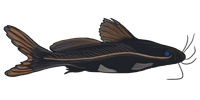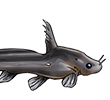Hello Shane,
I would like to quote the source of these data, if possible. What is the link mentioned?
Also,
Atabapo river is not a right-margin tributary of the Orinoco. It is a 210 km long tributary of Guaviare, on its right bank, < 0,5 km from the mouth of the Guaviare and ca. 22 km down-stream from the Inirida mouth; it is also blackwater river, as the Inirida. Atabapo headwaters are near the GuainÃa river (or Upper Rio Negro), for this reason it has tempted more than one engineer with the dream of another direct connection between the Orinoco and the Amazon basins, an alternative to the Casiquiare
caño which is not fully navigable. But the dry season is quite severe and the Atabapo does not allow either navigation during these times.
ATABAPO - RÃo formado por los rÃos Guacavà (colombiano), Atacavà y Temà (venezolanos). Sirve de lÃmite entre el departamento del GuainÃa (Colombia) y Venezuela Desemboca en el rÃo Guaviare. (Instituto Geográfico AgustÃn Codazzi. 1996. Diccionario Geográfico de Colombia. CD version)
Shane wrote:I thought I would take the liberty of putting the below together from the above link provided by HH. I think it is a very useful reference. It really shows the difference between the whitewater rivers coming from the Andes and those originating in the llanos or Guayana Shield.
For comparison, distilled water is usually .5 to 2 MicroSiemens (µS/cm)
Orinoco Tributaries:
Left Bank tributaries
River pH Conduct (µS/cm)
Guaviare (above Inirida) 6.7 21.5
Guaviare (below Inirida) 6.35 15.7
Inirida 5.05 5.4
Vichada 5.40 3.3
Meta 6.94 48.0
Cinaruco 5.46 5.9
Capanaparo 6.26 15.0
Arauca 6.63 14.7
Apure 7.65 190.0
Right Bank
Ocampo 6.35 16.0
Padamo 6.00 8.0
Ventuari (SB) 5.95 8.0
Ventuari (C) 6.40 12.0
Atabapo 4.35 12.4
Manapiare 6.00 8.0
Parucito 6.36 16.0
Parguaza 5.71 7.4
Suapure 6.20 12.0
Aro 7.14 18.0
Cuchivero 6.81 14.4
Caura 6.50 9.7
Caroni 5.76 6.2
-Shane






